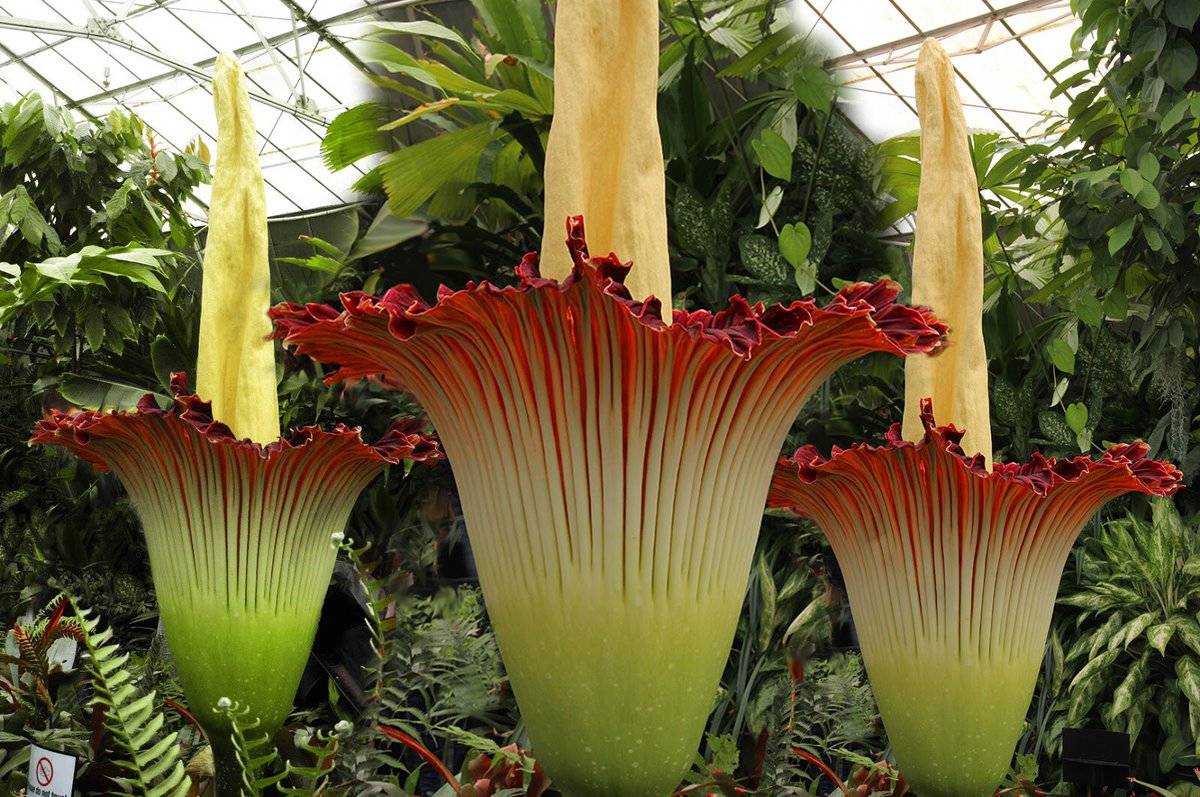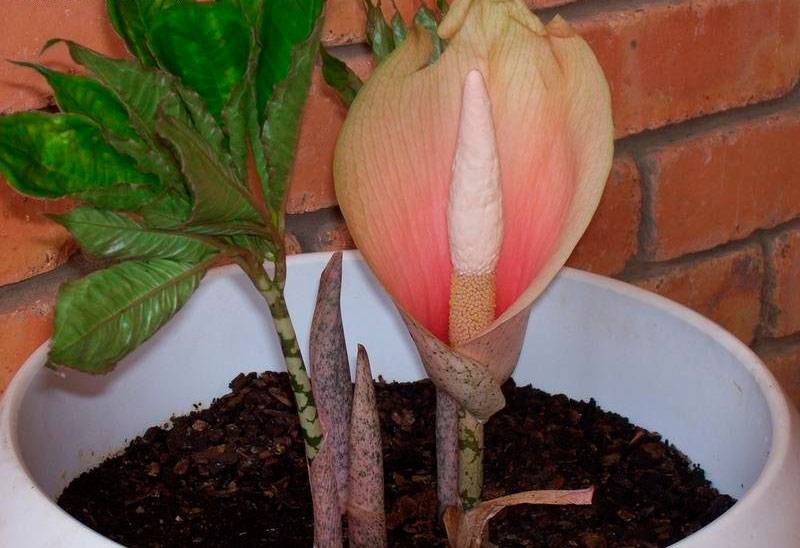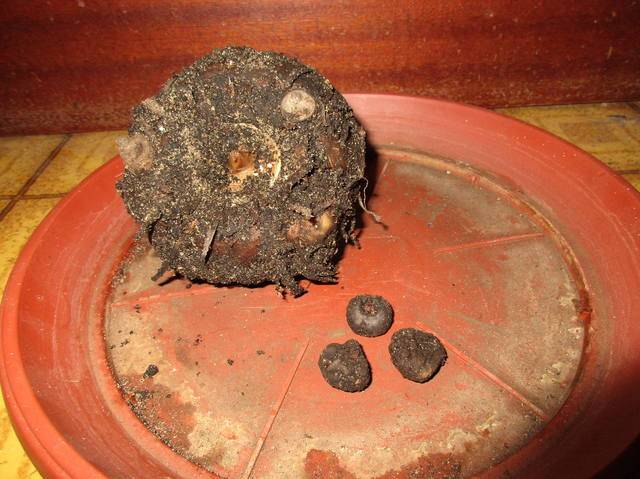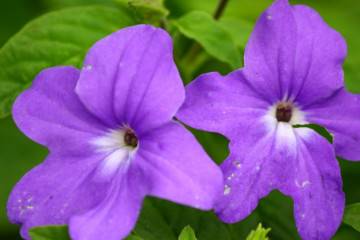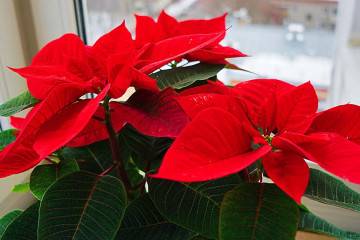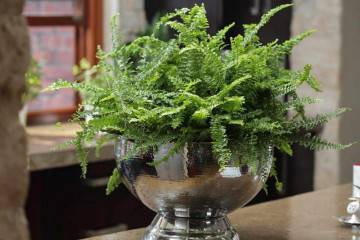Amorphophallus flower indoor - home care
Content:
Amorphophallus is a flower that is considered one of the most unusual and original plants in the whole world. However, he does not enjoy great love among lovers of indoor flowers. This is due to both the unpleasant odor and the prolonged rest period. But true connoisseurs of exotic plants highly appreciate the decorative qualities of the plant and are engaged in its cultivation and breeding.
What does amorphophallus look like and which family it belongs to
Amorphophallus belongs to the Aroid family, whose representatives are herbaceous plants. Popular names for amorphophallus are snake palm and snake tree, voodoo lily. The main habitat is the tropical forests of India and Sumatra.
Brief description of the flower:
- after leaving the dormant period, the flower releases 1 very large leaf on a long petiole (its height can reach 1.5 m);
- high growth rate;
- flowering indoors after a dormant period;
- ease of growing a flower;
- it is a perennial, but the aboveground part dies off immediately after flowering.
Common varieties
The most popular are the following types and varieties.
Amorphophallus titanic - the tallest and largest species. The flower of this amorphophallus is the largest in the world. The ear is about 2 m high, surrounded by a large burgundy inflorescence, the tuber weight is about 20 kg. It is very popular, but it is impossible to grow such an amorphophallus flower at home.
Amorphophallus Cognac (pion-leaved) differs from the previous one in smaller size and shape of tubers, each of which is no more than 20 cm in diameter. Peduncle no more than 60 cm, ear no more than 50 cm, inflorescence of rich violet-burgundy color, close to cognac.
The bulbous amorphophallus variety is more consistent with the concepts of a houseplant due to its size. An adult specimen does not grow more than 50 cm in length. The inflorescence of pale pink color is short (about 30 cm), the whole ear is painted in a uniform color.
Features of home care
Caring for homemade amorphaphallus Limtie and any other variety is not difficult, but at the same time, in order for the plant to grow and develop, it is necessary to maintain a certain level of the environment.
Temperature
The temperature in the room where the plant is grown must be high enough. The ephemeroid feels best at 25-30 ° C. If sprayed regularly, then higher temperatures are not afraid of it. With the onset of the dormant period, the tubers need a lower temperature - about 10 ° C.
Lighting
Since the flower grows in the lower tier in the rainforest, it needs bright, but diffused sunlight. The west and east sides are suitable for this.
Watering
Since the homeland of a flower is the tropics, where heat and humidity are the main conditions of the climate, then at home you need to try to create a similar atmosphere for it. Watering is required regular and abundant. The ground should always be moist. To prevent moisture from stagnating, you need good drainage. Allow the water to settle before watering.
Spraying
Spraying should be done daily. If this is not done in time, the leaves will wither and turn yellow. Spraying is carried out with warm, settled water.
Humidity
Humidity during the growing season and flowering period is a mandatory requirement for flower care. It needs to be sprayed daily (in hot, sunny, dry weather, twice a day). There should always be containers with wet expanded clay, water and a room humidifier next to it.
Priming
The soil is composed of humus, grain and sand, taken in equal proportions. A ready-made soil mixture for Saintpaulias or any universal soil for indoor flowers is also suitable.
Top dressing
As soon as the sprout has hatched after hibernation, they begin to feed it. Ready-made liquid fertilizers with a high phosphorus content are ideal. The procedure is performed once every 10-14 days.
Features of winter care during the rest period
The flower has a pronounced and very long dormant period. Immediately after flowering, all the leaves fall off. As soon as this happens, the pot with the plant is placed in a shaded, cool place and periodically moistened. At the end of March, the tubers are transplanted to a new location, in larger pots.
The bulbs must be carefully inspected before replanting. When rotten areas appear, it is necessary to carefully cut them out with a disinfected knife and treat the cut site with crushed charcoal or a disinfectant. For a day, the tuber must remain in the open air to dry out. After that, plant the amorphophallus in a new pot.
Pruning
Trimming is not carried out as such. Just before the onset of the dormant period, all the dead aerial part is removed.
When and how it blooms
It is the flowers that are the main reason the plant is grown. Flower characteristic:
- they are monoecious, do not have a perianth, are divided by gender;
- the inflorescence is an oval or elongated ear, wrapped in a blanket. The bedspread may fall off or remain throughout the flowering period.
The flowering period of amorphophallus at home is 1-2 summer months. Flowering frequency 1 time in 3 years. The flower is open for only a week. This process takes a lot of energy from the plant, even the underground part decreases in size.
When asked why amorphophallus does not bloom, the answer is simple - it just prepares for flowering (if, of course, all the conditions are provided to it). More often, he simply cannot physically bloom. Because of this, many do not like to keep it at home.
How amorphophallus multiplies
There are 3 ways of reproduction: by seeds, by children and by dividing the tuber.
- Reproduction by children is the best option, since the structure of the root system implies that additional baby nodules are formed on the roots during the growing season. After their separation in the fall, they, like the mother tubers, are sent for storage in a dry, dark place. Planting in the ground is carried out in conjunction with the transplantation of adult tubers.
- Only those with at least 2 germinated buds are suitable for dividing the tuber. The tuber is cut into 2 parts (on each of the kidneys), the sections are disinfected and dried in the fresh air for 24 hours. After that, they are planted in a prepared substrate. After that, it is worth watering the flower for some time as carefully as possible.
- The seed method is rare, difficult, and unproductive. The resulting plant blooms only a few years after germination.
Transfer
The transplant is carried out in the spring, after the rest period ends. A thick layer of drainage is laid out in a new pot, the substrate is poured and a flower is planted in it.
Diseases and pests
With proper care, this plant has a high immunity to diseases and pests, they practically do not bother it. The only parasites that can appear on it are aphids or spider mites. Over-watering causes root rot. Insects are removed with insecticides, and in order to get rid of rot, you will have to transplant the flower into new soil, remove damaged parts and adjust the watering regime.
Amorphophallus is a houseplant, a surprisingly decorative flower that is only suitable for patient owners. You will have to wait for flowering for a long time, for several months the plant lies in the form of bulbs without any signs of life. However, the wait is certainly worth the wait. With step-by-step compliance with all the rules of care, after the first flowering, the florist will remain fascinated and agree to wait for a new miracle as long as necessary.

